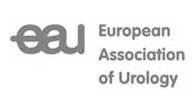What is Flexible Pyeloscopy with Holmium Laser?

Flexible pyeloscopy with Holmium laser is a minimally invasive procedure used to treat kidney stones without the need for an incision. The procedure involves introducing a fine telescope via the urethra (the tube through which urine leaves the body) into the urinary bladder and then up the ureter (tube connecting your kidney and bladder) into the kidney to break up the stone(s) with a Holmium laser. The procedure has a high success rate and can be performed as day surgery. Moreover, it is relatively safe and has only a small risk of infection, mild bleeding, or damage to the ureter. In addition, it allows kidney stone treatment without the need for any incision by using the urethra as the entry point.
Indications
Flexible pyeloscopy with Holmium laser is indicated for the treatment of kidney stones up to 2 cm in size.
Kidney stones are one of the most common and most painful disorders of the urinary tract. A kidney stone is a hard crystalline mineral material that forms within the kidneys or urinary tract. Most kidney stones that are small enough usually pass through the urinary tract on their own with more fluid intake. However, large stones can lodge in some parts of the urinary tract, blocking the passage of urine. This can lead to severe abdominal, lower back, or groin pain, infection, and kidney damage. Large kidney stones may be treated by breaking the stones into smaller fragments so that they can easily pass out through the urine. This may be accomplished through a minimally invasive procedure such as flexible pyeloscopy with the help of a Holmium laser.
Preparation for Flexible Pyeloscopy with Holmium Laser
In general, preparation for flexible pyeloscopy with Holmium laser may involve the following:
- A review of your medical history and a physical examination are performed to check for any medical issues that need to be addressed prior to the procedure.
- Inform your doctor of any allergies to medications, anaesthesia, or latex.
- Refrain from solids or liquids at least 6 hours prior to the procedure.
- Inform your doctor of any medications or supplements you are taking or any medical conditions you have such as heart or lung disease.
- You may take your regular medications with a sip of water with the exception of blood thinners or non-steroidal anti-inflammatories, which may need to be discontinued in advance.
- You should undergo a mid-stream urine (MSU) test to make sure the urine is sterile before treatment is carried out.
- You should bring all images related to your condition such as x-rays, CT scan, or ultrasound.
- You should arrange for someone to drive you home after the procedure.
- A signed informed consent form will be obtained from you after the pros and cons of the procedure have been explained.
Procedure for Flexible Pyeloscopy with Holmium Laser
The procedure is performed under general anaesthesia and usually takes about 60 to 90 minutes. It involves inserting a flexible telescope (pyeloscope) of less than 3 mm diameter into the kidney from the bladder via the urethra. The flexible nature of the scope allows visualisation of the entire kidney drainage which helps to locate the stone. The pyeloscope also has a small instrument port through which a Holmium laser fibre of 0.2 mm diameter is introduced. Once the stone is located within the kidney, the laser is used to fragment the kidney stone. Micro-baskets of less than 1 mm wide are then used to remove the fragmented stones. Sometimes, a temporary urinary stent is left in place for a short period to ensure that stone fragments are drained from the kidney and ureter without the risk of blockage.
Post-Procedure Care and Recovery
After the procedure, patients often feel the need to urinate and some people may notice blood in their urine, which will diminish in the following days. You may also notice a stinging sensation during urination, which can be alleviated by a simple over-the-counter medication called Ural. Oral antibiotics and analgesics are usually prescribed to prevent infection and reduce pain. Occasionally, a stronger analgesic may be required. You should drink at least 8 glasses of water or 2.5 litres a day. If a urinary stent is left in place, care should be taken so as not to accidentally dislodge the stent. As general anaesthesia is used for the procedure, driving should be avoided for at least 24 hours after the procedure. A periodic follow-up appointment will be scheduled to monitor your progress and remove the stent if used during the procedure.
Risks and Complications
Flexible pyeloscopy with Holmium laser is considered a very safe procedure; however, as with any medical procedure, some risks and complications may occur, such as the following:
- Infection
- Bleeding
- Loin pain
- Adverse reactions to anaesthesia
- Stinging sensation while urinating
- Perforation of the ureter
- Ureteric stricture







